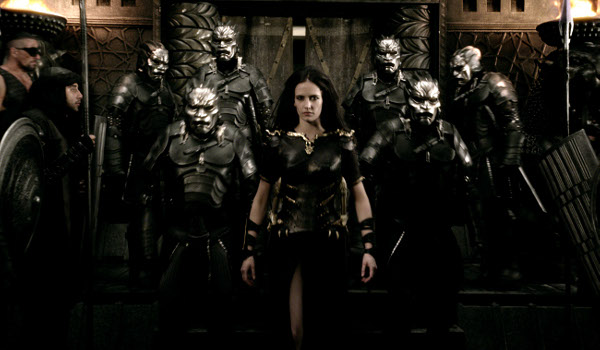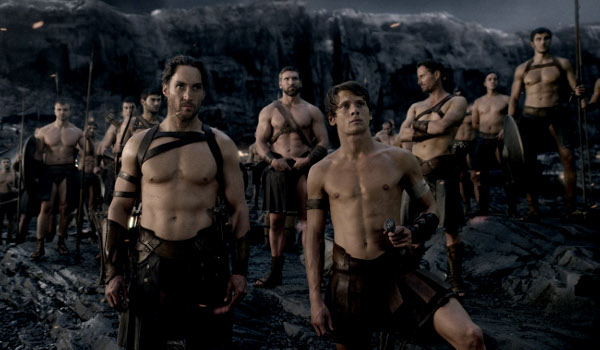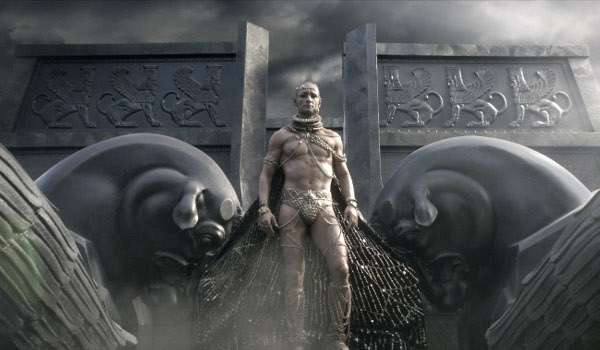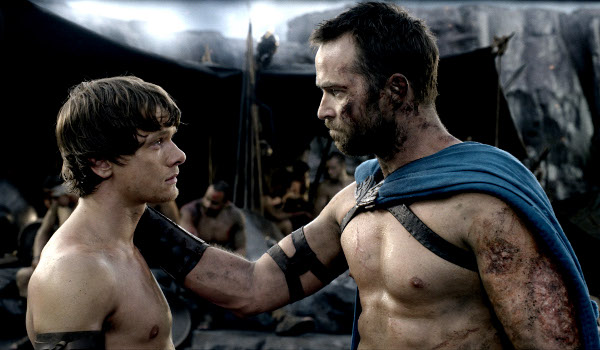- Title: 300: Rise of an Empire
- IMDB: link

 I’m not a Zack Snyder fan. I hated what Snyder and screenwriter David S. Goyer did to Superman, was disappointed with his interpretation of Watchmen, and was disturbed by watching the man make his own wet dreams into a feature film. Of the Snyder films I’ve been forced to endure over the years 300 is the only one I remotely enjoyed.
I’m not a Zack Snyder fan. I hated what Snyder and screenwriter David S. Goyer did to Superman, was disappointed with his interpretation of Watchmen, and was disturbed by watching the man make his own wet dreams into a feature film. Of the Snyder films I’ve been forced to endure over the years 300 is the only one I remotely enjoyed.
Despite obvious flaws, Snyder delivered a slick-looking adaption of Frank Miller’s graphic novel that focused on the legendary accomplishments of the 300 Spartans during the Battle of Thermopylae (while completing ignoring the other Greek forces which aided them – as did Miller’s original work). Turning the sequel over to the hands of director Noam Murro, 300: Rise of an Empire is a joyless blood-spattered spectacle lacking in both story and presentation. Sadly, it seems Murro proves unable to recapture what little magic Zack Snyder was able to bring to the screen while balancing the bloodier elements of the first film with 300‘s visual-style and the silly muscle-bound unclothed warriors constantly preening for the camera in various dramatic poses.
Taking place simultaneously to the events the first film, 300: Rise of an Empire centers on the rest of Greece and their naval battles with the Persian navy lead by Artemisia (Eva Green, in an over-the-top performance providing most of the film’s only humorous moments – although many are not necessarily on purpose) while King Leonidas (Gerard Butler) and his 300 Spartans laid down their lives to slow the Persian army’s advance. Although she plays an even smaller role than in the first film, Lena Headey returns as Queen Gorgo who narrates the adventures of the Greek army (almost none of which she could have actually witnessed) led by the Athenian general Themistocles (Sullivan Stapleton).
In flashbacks explaining Artemis’ unseemly backstory we also get a look at how Xerxes (Rodrigo Santoro) was transformed from the prince-king into a living god by the hand of Artemis and a mystical pool which gave him the Mardi Gras makeover he quite enjoys for most of both films. We also get backstories for Themistocles and a father (Andrew Tiernan) and son (Jack O’Connell) in his navy who join the cause. You’ll be able to guess what happens to each character less than 5 seconds after their introduction.

Aside from the style of the first film, which the sequel apes rather than recaptures, 300: Rise of an Empire lacks the rousing tale of Thermopylae to build a story around. Instead we’re given a naval chess match between the tiny Greek armada and the Persian navy that prematurely climaxes (literally) in the film’s most absurd sequence not to include Xerxes (you’ll know it when you see it). We get plenty of bloody action here with squirts of 3D blood slowly spewing across the screen, but that’s really the film’s only special effect as the look of the film is far from impressive enough to hide the script’s obvious flaws.
300: Rise of an Empire is a film so bad you’ll laugh and come close to enjoying its awfulness. However the film is overburdened with narration, exposition, forgettable action sequences with large body counts without any memorable moments, and characters and events who are all less interesting than the first film. As either a sequel or standalone film, the bloody and at times laughably awful 300: Rise of an Empire fails to impress.




